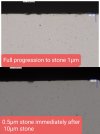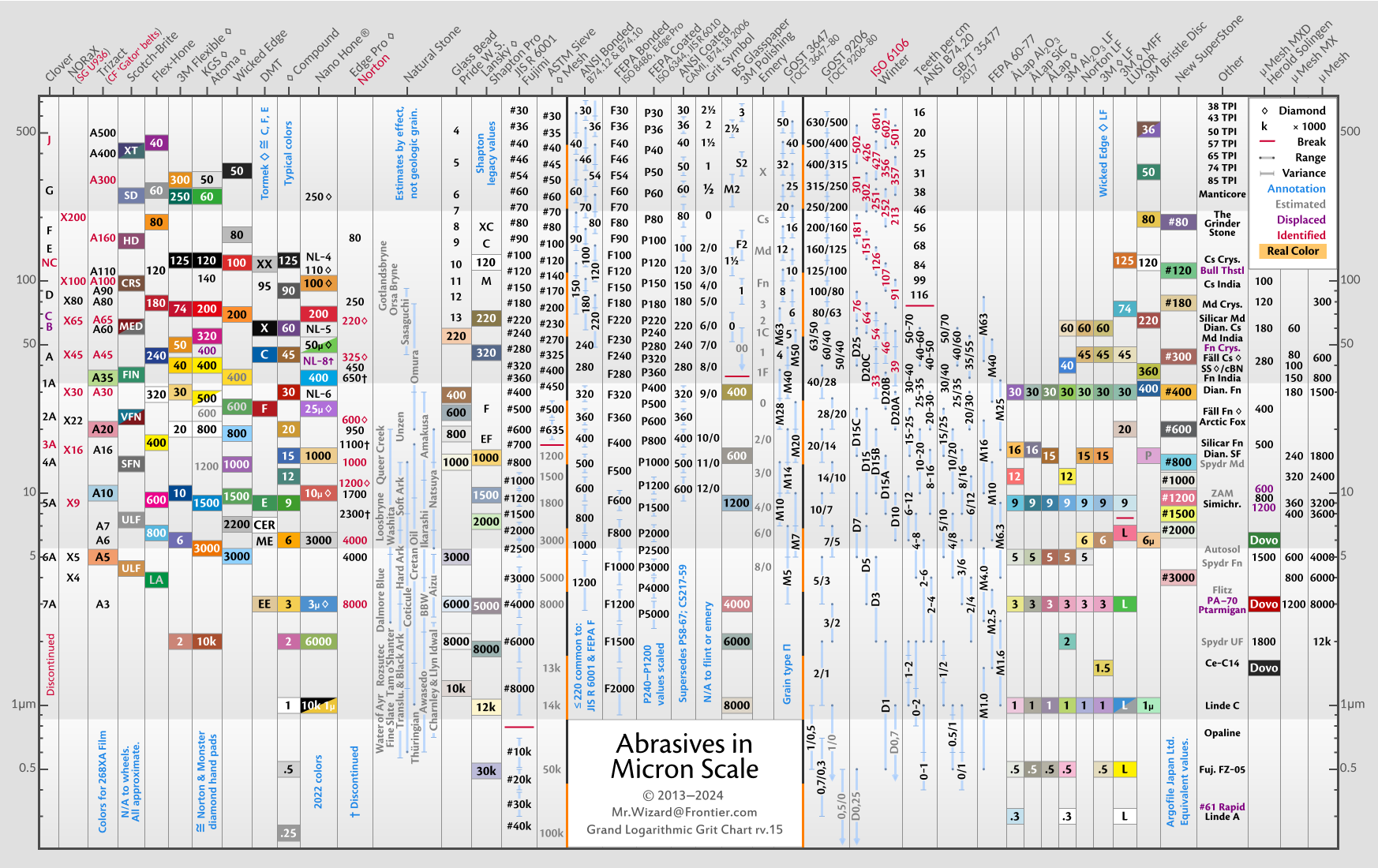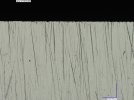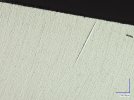The conversion is not black and white, which is why the different conversion sheets don't agree with each other. There are so many variables besides the size of the abrasive that the vagueness doesn't matter.
-
The BladeForums.com 2024 Traditional Knife is ready to order! See this thread for details: https://www.bladeforums.com/threads/bladeforums-2024-traditional-knife.2003187/
Price is$300$250 ea (shipped within CONUS). If you live outside the US, I will contact you after your order for extra shipping charges.
Order here: https://www.bladeforums.com/help/2024-traditional/ - Order as many as you like, we have plenty.
You are using an out of date browser. It may not display this or other websites correctly.
You should upgrade or use an alternative browser.
You should upgrade or use an alternative browser.
Anyone hear of Dr. Marv and his resin bond diamond stones?
- Thread starter Diemaker
- Start date
- Joined
- Mar 8, 2008
- Messages
- 26,109
Yeah, this. The difference in abrasive grit rating standards uses different tolerances and permissible min/max grain size, weighted average grain size, and so on, and each standard uses different parameters. But grain size is only one of many variables affecting performance, to the point where there isn't really a truly simple, singular metric to use for it.
It is also important to understand that one stone can have different results on the same steel depending on how you dress it.
My new PDT CBN stones ground like a new, insanely scratched mirror, even after a 15,000 grid (1/0 micron) grit.
But I adjusted them by dripping industrial diamond slurry with a grain size of 0.25-0.5 microns onto them and grinding two stones (15,000 and 10,000) against each other for about a minute. Then I washed the stones and dressed them again under running water with Naniwa 12000 nagura just to remove any loose grain residue on the surface.
Now the stones sharpen so that only a few hairline scratches are visible on the entire blade, which can only be seen at the right angle of light.
However, it is still not the same result as with Dr. Marv stones in terms of the mirror finish on the edge.
Of course, there is always room for improvement. I know this because I work in the optical industry, where we grind tungsten carbide to tolerances below 10 nanometers, which is also a mirror, but it seems unnatural to the human eye. It no longer looks like a mirror, but rather a window into another dimension.
I would like to ask the moderator how many posts I need to make on this forum before I am allowed to post images?
My new PDT CBN stones ground like a new, insanely scratched mirror, even after a 15,000 grid (1/0 micron) grit.
But I adjusted them by dripping industrial diamond slurry with a grain size of 0.25-0.5 microns onto them and grinding two stones (15,000 and 10,000) against each other for about a minute. Then I washed the stones and dressed them again under running water with Naniwa 12000 nagura just to remove any loose grain residue on the surface.
Now the stones sharpen so that only a few hairline scratches are visible on the entire blade, which can only be seen at the right angle of light.
However, it is still not the same result as with Dr. Marv stones in terms of the mirror finish on the edge.
Of course, there is always room for improvement. I know this because I work in the optical industry, where we grind tungsten carbide to tolerances below 10 nanometers, which is also a mirror, but it seems unnatural to the human eye. It no longer looks like a mirror, but rather a window into another dimension.
I would like to ask the moderator how many posts I need to make on this forum before I am allowed to post images?
- Joined
- Mar 8, 2008
- Messages
- 26,109
With an unpaid account, images have to be hosted on another website and IMG tags used to reference the URL.It is also important to understand that one stone can have different results on the same steel depending on how you dress it.
My new PDT CBN stones ground like a new, insanely scratched mirror, even after a 15,000 grid (1/0 micron) grit.
But I adjusted them by dripping industrial diamond slurry with a grain size of 0.25-0.5 microns onto them and grinding two stones (15,000 and 10,000) against each other for about a minute. Then I washed the stones and dressed them again under running water with Naniwa 12000 nagura just to remove any loose grain residue on the surface.
Now the stones sharpen so that only a few hairline scratches are visible on the entire blade, which can only be seen at the right angle of light.
However, it is still not the same result as with Dr. Marv stones in terms of the mirror finish on the edge.
Of course, there is always room for improvement. I know this because I work in the optical industry, where we grind tungsten carbide to tolerances below 10 nanometers, which is also a mirror, but it seems unnatural to the human eye. It no longer looks like a mirror, but rather a window into another dimension.
I would like to ask the moderator how many posts I need to make on this forum before I am allowed to post images?
I will also show the results of experiments using Dr. Marv 0.5 micron stone. After 1 micron stone, it is practically impossible to use. Both surfaces rubbing against each other are so smooth that a phenomenon called adhesion occurs and the diamond tears pieces of material out of the steel.
So I tried to roughen the 0.5 stone using an electroplated 80-grit plate, but without success.
So I tried leaving the rough edge surface and, after 10-micron grit, I immediately ground it with a 0.5-micron Dr. Marv stone.
The result is absolutely fantastic sharpness.
Better than after the entire sequence of stones from 10 microns to 1 micron.
To give you an idea, a colleague of mine gave me one of her hairs. I dropped it on the blade and it got stuck on the edge. When I blew on it, it cut through.
S35VN

So I tried to roughen the 0.5 stone using an electroplated 80-grit plate, but without success.
So I tried leaving the rough edge surface and, after 10-micron grit, I immediately ground it with a 0.5-micron Dr. Marv stone.
The result is absolutely fantastic sharpness.
Better than after the entire sequence of stones from 10 microns to 1 micron.
To give you an idea, a colleague of mine gave me one of her hairs. I dropped it on the blade and it got stuck on the edge. When I blew on it, it cut through.
S35VN

dantzk8
Basic Member
- Joined
- Nov 1, 2005
- Messages
- 1,950
While I fully understand that this site owes its long standing existence to the steady diet of threads titled “Which fixed blade to baton through the crankshaft of my small block Chevy engine?”, it’s the discussions like this one that have kept me a huge fan of Bladeforums for over a quarter century. Pushing the limits of our sharpening abilities is a never ending pursuit, but ultimately a fun and rewarding one. Thanks to D Diemaker and B -BaRD- for generously sharing your time and wealth of information.
Is there one chart out there you guys would recommend as the most accurate for converting micron size to grit values, in the specific context of blade sharpening, at least? A quick Google search will reveal thousands of such charts, but the discrepancies from one to the next can be truly monumental.
I would recommend this one:
Revision 16 is live. See the README for details and license. Feel free to comment on style or content, and please let me know if you find any errors. The previous revision resides at https://myplace.frontier.com/~mr.wizard/GLGC/ for visual comparison. I am embedding in WebP format below for a smaller file size; if does not appear please try the PNG version: https://myplace.frontier.com/~mr.wizard/GLGC/GLGC.png
https://myplace.frontier.com/~mr.wizard/GLGC/README.txt

https://myplace.frontier.com/~mr.wizard/GLGC/README.txt

- Mr.Wizard
- Replies: 9
- Forum: Maintenance, Tinkering & Embellishment
Dan.



